IPM is the coordinated use of pest and environmental information and available pest control methods to prevent unacceptable levels of damage by the most economical means with the least possible hazard to people, property and the environment. — EPA.
IPM Principles
The principles and practices of integrated pest management (IPM) have been adopted by tomato and pepper growers in Florida because it is no longer possible to rely solely on programmed applications of chemical pesticides to prevent unacceptable crop losses. Moreover, some preferred practices may not be available to tomato and pepper growers in the future, such as methyl bromide fumigation, so alternatives must be sought.
- The first principle of IPM is to use the best available practices, especially scouting, to prevent pests from reaching established damage thresholds. Best practices are defined by criteria that include effectiveness, cost, convenience, and risk to human health and the environment.
- Another principle of IPM is to use cultural methods and information about the biology of pests to design pest resistant cropping systems. This has led to the use of crop rotation, cover crops, resistant varieties, plasticulture, planting and plow down dates, mapping of fields and other ways to manage crops.
- Scouting for the occurrence of pests and severity of crop damage is virtually universal in tomato and pepper farming and has led to the establishment of economic thresholds.
- Biological controls, both natural and augmentative, are the next level of defense against pests. Information is needed to have confidence in the level of pest suppression that can be expected.
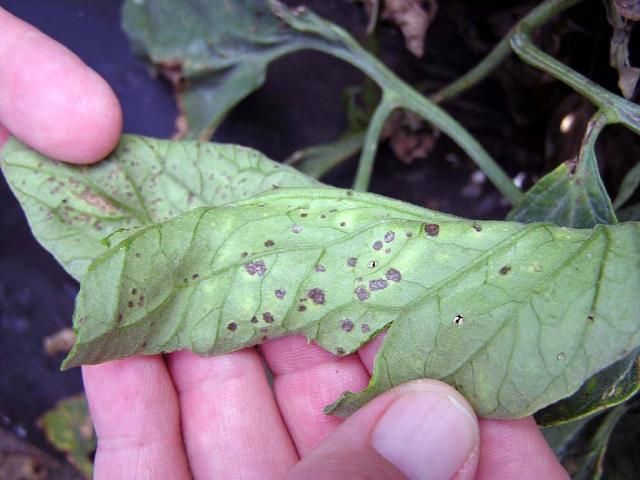
Credit: Ken Pernezny, UF/IFAS
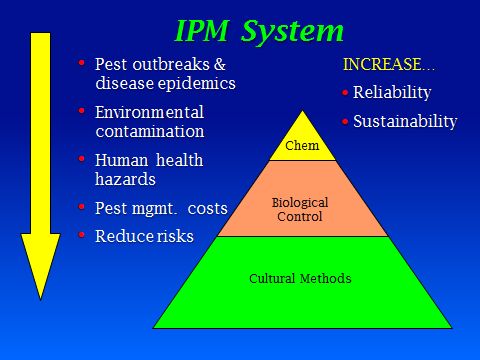
Credit: Norm Leppla, UF/IFAS
Lessons from the Past
Prior to the initiation of a rudimentary IPM program in the late 1970s, there was virtually no organized pest scouting on vegetable acreage in Florida. Growers sprayed at least two tank-mixed insecticides twice weekly, the equivalent of about 48 doses of insecticide per crop.
- Tomato growers in North Florida initially reacted to epidemics of tomato spotted wilt virus by spraying toxic, broad-spectrum insecticides in an unsuccessful effort to control transmission by the thrips vector.
- The silverleaf whitefly became the key pest of tomatoes in the southern half of Florida. Feeding by nymphs causes irregular ripening of tomato and adults transmit plant viruses, primarily Tomato yellow leaf curl virus.
- The heavy reliance on neonicotinoids, particularly imidacloprid, for whitefly control resulted in the whitefly becoming resistant in some areas.
- Soil-borne pests, such as the root-knot nematode, nutsedge, and others have been controlled by methyl bromide fumigation prior to planting.
None of these practices are sustainable economically or environmentally, and can lead to widespread resistance and crop failures. Growers can no longer rely on broad-spectrum pesticides and have to incorporate several alternative practices for pest management. They have to adopt multi-tactic, ecologically based IPM by selecting the best available technologies for reducing pest risk in their farming systems while maintaining economic viability.
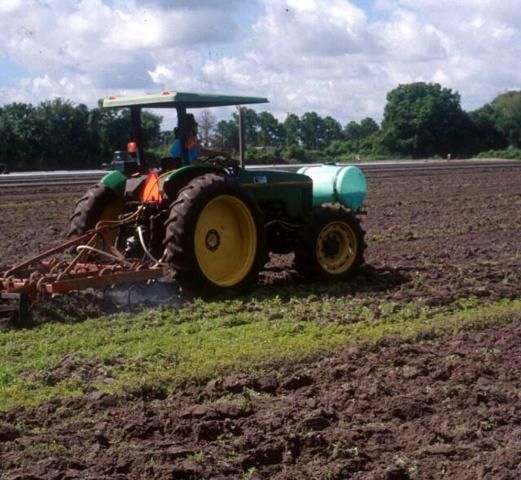
Credit: Joe Noling, UF/IFAS
IPM Successes in Florida
Tomato and pepper IPM continue to be among the greatest successes in Florida agriculture. An estimated 75% of the tomato acreage is scouted twice weekly and sprayed only on demand. Management of the silverleaf whitefly with applications of neonicotinoids to transplants followed by non-nicotinoid insecticides has been effective. The number of insecticide applications has been reduced by 50%.
In the long term, however, chemical pest management alone does not create sustainable production systems. Consequently, extensive research and Extension programs have been conducted on IPM in tomato and pepper to help growers transition away from high-risk pesticides and adopt biologically-based IPM.
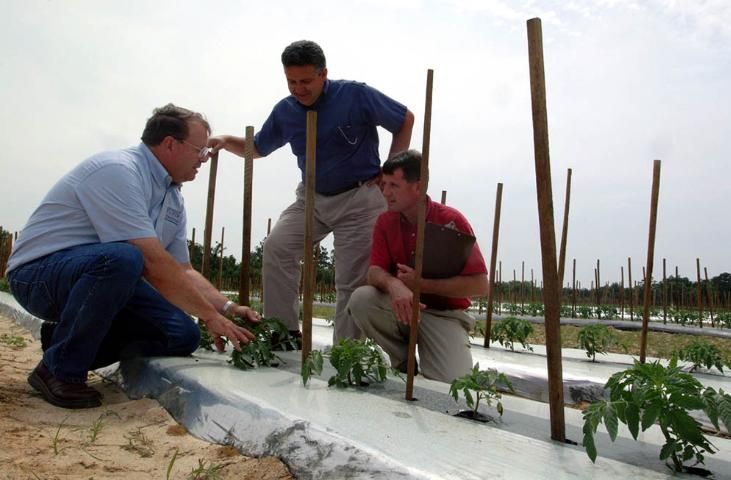
Credit: UF/IFAS
Planning Ahead
Ultimately, the only sustainable way to protect a crop and maximize profitability is to incorporate pest management into the planning process. An IPM plan must be developed that is first preventative and then effective in virtually eliminating the key pests of tomato and pepper.
An IPM checklist is helpful for incorporating effective pest prevention, monitoring and management practices. There are many options and interactions for preventing pests that must be evaluated, including the selection of fields to plant based on pest history, farming practices of neighbors, crops in the area that could "grow" pests to infest adjacent fields, sanitation in the fields and borders, presence of hedgerows and other barriers, and myriad variables that could help maximize crop production.
- Preparing the fields usually requires decisions about soil testing, pH and nutrient adjustments, addition of organic amendments, solarization, fumigation and bedding. Appropriate resistant varieties are selected and obtained as clean transplants.
- Before the variety to be planted is selected and the field prepared, decisions about appropriate cultural controls are implemented, e.g., planting dates, mulches, sanitation, fallow periods, crop rotation, cover and trap crops, hedge rows, etc.
- Scouting is well established for detecting pests, but economic thresholds are low because of the high value of the crops. Consequently, the methods, frequency, and intensity of scouting are critical decisions.
- Natural enemies are conserved and possibly augmented, particularly generalist predators.
- If pesticides will eventually be needed, consideration must be given to the cost of purchase and application, human health risks, environmental contamination, resistance management, and a host of legal issues.

Credit: UF/IFAS
Advantages of IPM
Since preventative IPM practices reduce the use of high risk pesticides, they can provide marketing advantages and protection from claims of environmental pollution.
The concept of IPM has gained acceptance as single pest management technologies have failed, become too expensive or been made unavailable because of regulatory action. A process of adding technologies in succession as each fails can sometimes save a crop but is wasteful.
Increasingly, food processors and retailers are prescribing pest management practices for their products to assure food safety. These products automatically provide market access and usually command premium prices. This partnership along the food supply chain from producer to consumer increases the involvement of each member in maintaining the sustainability of crop production for everyones benefit. This total crop planning and marketing continuum that enables growers to anticipate and prevent most severe pest problems is the advantage IPM has over the unsustainable reactionary approach.
Project Objectives
Greater adoption of prevention-oriented IPM practices will increase opportunities for growers to widen their options for managing pests and diseases while maintaining economic viability and reducing risks to human health and the environment. Growers, researchers, Extension agents, and crop consultants individually have vast experience with many of the specific components of effective IPM programs but usually lack a framework for overall crop planning that includes up-front pest management decisions.
The overall goal of the guide is to provide producers of tomato and pepper the information and decision tools they need to adopt alternative pest management systems that focus on ecologically-based, multi-tactic IPM strategies.
Florida's high value vegetable crops are management intensive, with heavy pest pressure requiring constant vigilance and multiple control tactics. Growers need an organized and practical synthesis of all of the resources that can help them plan their pest management programs and move toward bio-intensive IPM.
Vegetable growers in Florida currently use a variety of IPM practices and many have expressed their willingness to incorporate new tactics when provided with sufficient information.
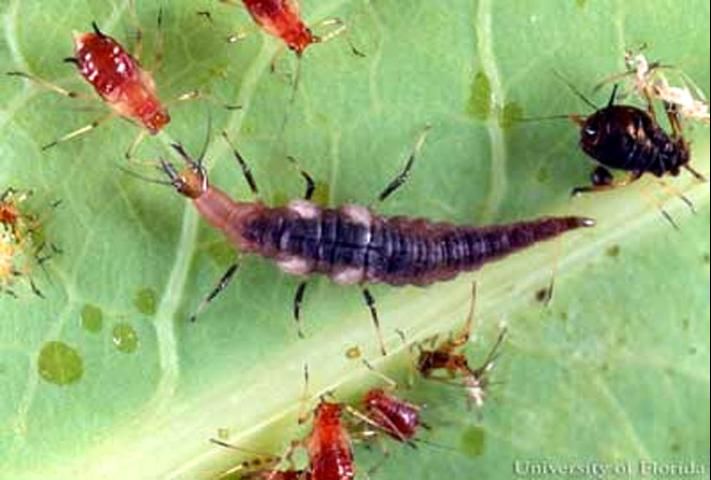
Credit: Lyle Buss, UF/IFAS
Acknowledgments
This document was originally produced by UF/IFAS IPM Florida as part of the Grower's IPM Guide for Florida Tomato and Pepper Production, the complete guide can be found at http://ipm.ifas.ufl.edu/resources/success_stories/T&PGuide/index.shtml. This document was compiled from material in Chapter 1—Introduction and was originally edited by Chapter Editor–Heidi N. HansPeterson. This EDIS document was compiled by Denise Thomas. The content can be seen in its original full-color form at http://ipm.ifas.ufl.edu/resources/success_stories/T&PGuide/pdfs/Chapter1/Chapter1-Why_IPM.pdf. We would like to thank Glinda Burnett for her EDIS editing skills.
References
Bajwa, W.I. and M. Kogan. 1992. Compendium of IPM Definitions (CID), Integrated Plant Protection Center (IPPC), Oregon State University, Corvallis. Publication No. 998 (1990-1998, Definition No. 5 from Proceedings of the National Integrated Pest Management Forum. 1992. American Farmland Trst, 86 pp.) http://ipmnet.org/IPMdefinitions.
Dittmar, P. J., J. H. Freeman and G. E. Vallad (Eds). 2015. Vegetable Production Handbook of Florida, 2015–2016. Gainesville: University of Florida Institute of Food and Agricultural Sciences. https://edis.ifas.ufl.edu/pdffiles/cv/cv29200.pdf
Mossler, M., Aerts, M.J. and O.N. Nesheim. 2012. Florida Crop/Pest Management Profiles: Tomatoes. PI-039. Gainesville: University of Florida Institute of Food and Agricultural Sciences. https://edis.ifas.ufl.edu/PI039